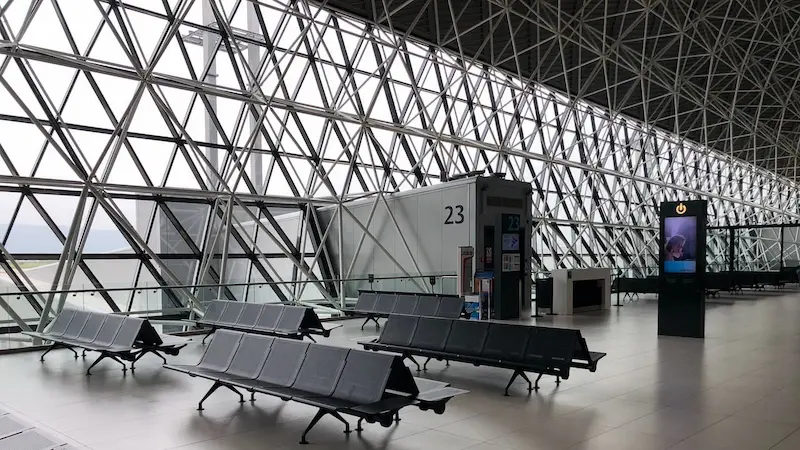
Table of Content
Arena digital signage is about connection. It connects the audience to the action, visitors to their destination, and brands to their ideal customers. The deployment is large-scale and involves advanced installation techniques and technologies. Other smaller signage systems within a stadium work behind the scenes to provide a smooth flow of visitors and enhance overall operational efficiency. This guide will discuss the benefits of having both deployments on a stadium, the types, plus real-life examples of stadium signage killing it in the real world.
Benefits of Digital Signage in Arenas and Stadiums
Revenue Generation
Businesses are always ready to buy ad space to gain exposure to a wider audience. Signage provides access to a wider range of advertisers due to the flexibility of rotating multiple ads. These advertisements and promotions can be tailored based on game events, demographics, or specific zones to maximize their relevance and impact. You can also partner with local businesses to promote in-stadium concessions, merchandise, and upcoming events to drive impulse purchases.
Communication
Digital signage excels as a communication medium by providing real-time updates especially when integrated with other systems. They provide instant broadcasts of safety messages, event schedules, and emergency instructions. The audience is kept updated on game statistics, player information, and scores.

Improved audience experience
Not everyone is at the front of an event but that doesn’t mean they have to miss out on the action. Most stadiums have large video walls at optimal viewing angles that bring the thrill of the game or performance to every seat. That coupled with easy navigation, real-time updates on player stats, or replays of key moments keeps the crowd fully immersed. In instances where stadiums have cutting-edge digital signage solutions including 360-degree video walls is a mindblowing experience by itself.
Types of Arena & Stadium Digital Signage
Scoreboards and Video Walls
Scoreboards are large electronic displays typically positioned at opposite ends of the playing field or court. They provide real-time updates on the score, time remaining, and other game statistics to keep spectators informed about the progress and outcome of the event.
Video walls consist of large screens arranged together to create a visually impressive display. These screens can be used individually or combined to form a single cohesive image or video. They showcase live game footage, instant replays, player profiles, advertisements, and other engaging content.
Wayfinding and Interactive Maps
Wayfinding signage consists of digital displays in high-traffic areas such as entrances, concourses, and intersections to provide clear directions and visual cues. With interactive wayfinding, visitors can input their desired location or select from a list of popular locations, and the map will provide step-by-step directions. Some interactive maps may also offer additional information, such as nearby amenities, event schedules, and points of interest within the venue.
Digital Menus and Advertising Displays
Digital menus are displays located in food courts, concessions areas, and other dining sections within the venue. These menus showcase the available food and beverage options with the prices, descriptions, and special offers or promotions. Venues can easily update the menu in real-time so that guests have accurate and up-to-date information about the available dining choices using digital screens. Digital menu boards also advertise through images and videos to entice customers and enhance their appetites. This digital signage type streamlines the ordering process and reduces perceived wait times.

Emergency Alerts and Safety Signage
Emergency alert systems integrated with digital signage infrastructure enable venues to quickly disseminate critical safety information in an emergency. Alerts can include notifications about severe weather conditions, evacuation procedures, shelter locations, and other pertinent instructions.
Safety signage displays safety protocols, venue policies, and emergency contact information. These signs can be placed at entrances, concourses, seating areas, and other high-visibility locations. They may include instructions on prohibited items, reminders about maintaining personal safety, and guidelines for crowd management.
Best Practices for Implementing Arena & Stadium Digital Signage
Content Creation and Management
1. Define Clear Objectives: It could be a combination of all the benefits listed above. Having a clear list of objectives is important since they will inform the kind of deployment.
2. Tailor Content to the Audience: Personalize your signage content by taking demographics, interests, and preferences when creating your messaging.
3. Consistent Branding: Use consistent colors, fonts, logos, and design elements to reinforce your brand identity and create a cohesive visual experience throughout the venue.
4. Content Management System (CMS): Implement a robust content management system to streamline content creation, scheduling, and distribution. A centralized CMS simplifies the managing processes, updates content across multiple displays, and ensures consistency and efficiency.
Integration with Existing Systems
Connecting your signage with other existing systems enhances relevance, which leads to increased dwell times. Start with your ticketing systems to provide live updates on seat availability. Use CRM data, such as fan preferences or loyalty program status, to tailor content on your digital signage. Display personalized messages, exclusive offers, or birthday greetings. Integrate your signage with real-time traffic systems to inform your audiences about road closures, congestion, and public transit schedules. This helps in planning arrival and departure.
Maintenance and Upgrades
Maintaining arena and stadium digital signage is essential for optimal performance. This involves proactive monitoring for potential issues, regular cleaning, hardware checks, and software updates. As technology advances, consider upgrades to displays, content, and network infrastructure to stay ahead of the curve. Partnering with reliable vendors or technology integrators can streamline maintenance and upgrade processes, ensuring your digital signage remains a valuable asset for your venue.
Real-life Examples: Successful Arena & Stadium Digital Signage Implementations
Case 1: The Mercedes-Benz Stadium

The Mercedes-Benz Stadium in Atlanta has a massive 63,000-square-foot halo video board. This 360-degree display encircles the retractable roof such that it’s visible for every seat within the stadium. Additionally, over 2,000 digital displays throughout the venue support wayfinding, concessions, and merchandising. Mercedes-Benz Stadium's investment in this digital infrastructure has solidified its reputation as a technologically advanced sporting and entertainment venue.
Case 2: Optus Stadium

Optus Stadium in Perth, Australia has over 12,500 signs for directional wayfinding, statutory, and memorabilia signage. These are designed to guide and inform visitors effectively throughout the multi-level venue. A significant component of this digital infrastructure is the integration of large LED displays manufactured. These include two main video boards located at the east and west ends of the stadium, each measuring approximately 10 meters high by 34 meters wide. These boards are used for live video, replays, event statistics, and advertising. The clarity and visibility of these displays are maintained even under direct sunlight to give attendees a clear view from their seats.
Case 3: SoFi Stadium

SoFi Stadium in Inglewood, California, has a massive 70,000-square-foot, dual-sided, center-hung video board. It's noted for being the largest video board in sports and for its innovative 4K end-to-end video production capabilities. This video board has nearly 80 million pixels and allows each panel to display unique or congruent graphics, animations, or live content. The size and design of the panels ensure visibility from any seat in the stadium. The system includes over 2,600 large-format displays and ribbon boards across five venue levels. These displays are integrated into a unified content management system that handles everything from live game feeds to replays and advertisements.
Elevate Audience Experience With Digital Signage
As you’ve seen, arena digital signage offers a wealth of benefits including streamlined wayfinding, enhanced guest experiences, additional revenue streams, and effective emergency communications. Choosing the right mix of displays, focusing on engaging content strategies, thoughtful integration with existing systems, and proactive maintenance will maximize your return on investment. If you want to know how to turn your stadium or event center into an experience, book a demo with Look DS today!







